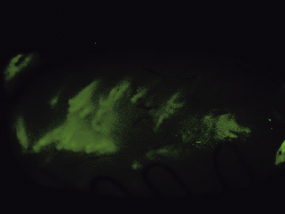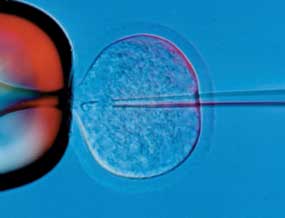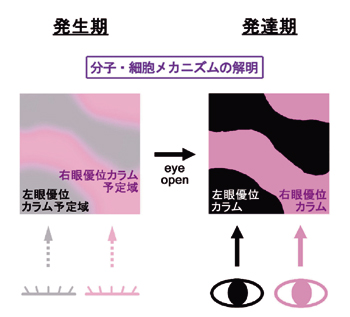CENTER FOR GENETIC ANALYSIS OF BEHAVIOR
Outline
This center produces gene modified rat/mouse and analyzes their behavior using multiple parameters under normal and various stressful conditions. The facilities in this center are open for the collaboratory use from researchers all over Japan.
Director
Professor: SHIGEMOTO, Ryuichi, PhD
Our research subjects include two major projects as follows.
First, we have focused on the reproductive biotechnology to understand gamete interactions during fertilization and the development of novel methodology to produce transgenic animals. Among them, we have a special interest in the increasing demand for production of gene-targeted (KO: knock-out) rats because use of rats rather than mice is advantageous in aspects of microsurgery and mapping of brain functions. Embryonic stem cell line and nuclear transfer (cloning) protocol have not yet been established in rats, attributing to slow progress of brain research. At present, we devote all our skills (e.g. in vitro fertilization, animal cloning, microinsemination, spermatogonial transplantation) to look for the possibility of producing KO rats, and also provide collaborative services to produce conventional knock out mice, and transgenic mice and rats by pronuclear DNA microinjection or intracytoplasmic sperm injection (ICSI)-mediated DNA transfer.
Second, by using techniques of rodent transgenesis, we have analyzed the molecular and cellular mechanisms to form functional ocular dominance (OD) columns in the primary visual cortex. OD columns are known to be fundamental units of processing visual information to sense depth, and are anatomically well documented as models in the research area of neuronal plasticity. Coarse OD columns are set up around birth, which are subsequently remodeled to the functional structure by visual activity after eye open. Our final goal is to understand the comprehensive story underlying formation of functional OD columns, which can be achieved by taking advantage of molecular markers specific for developing OD columns that we have originally isolated.
| Advanced Reproductive Technology in Rats |
 |
Fig.1 Spermatogonial transplantation in rats
Fate of transplanted spermatogonial cells; Donor spermatogonial stem cells originated from EGFP-Tg rats can proliferate and differentiate in the recipient seminiferous tubules of c-myc-Tg rats (three months after the spermatogonial transplantation).
|
 |
Fig.2 Intracytoplasmic sperm injection in rats
Production of fertilized rat oocytes by intracytoplasmic sperm injection (ICSI); A single fishhook-shaped sperm head is microinjected into ovulated and denuded oocytes with the aid of Piezo-micromanipulators.
|
| Ocular Dominance (OD) Column |
 |
Fig.3 Process of OD column formation
Coarse OD columns are set up around birth, and are subsequently instructed by incoming visual inputs to become functional structure after eye open.
|
Staff
 |
Associate Professor:
HIRABAYASHI, Masumi, PhD
1981 Graduated from Faculty of Hygiene, Fujita Health University. 1981 Research Fellow, Laboratory Animal Center, Fujita Health University. 1983 Researcher, Research Institute of Life Science, Snow Brand Milk Products, Co. Ltd. 1992 Group Leader, YS New Technology Institute, Inc. 2001 Adjunct Associate Professor, 2002 Associate Professor, NIPS.
Speciality: Laboratory Animal Science |
 |
Assistant Professor:
TOMITA, Koichi, MD, PhD
1994 Graduated from Mie University, School of Medicine. 1998 Graduated from Kyoto University, Graduate School of Medicine.1998 Postdoctoral Fellow, Kyoto University. 1999 Assistant Professor, Kyoto University. 2000 Postdoctoral Fellow, Max-Planck Institute of Neurobiology. 2006 Assistant Professor, NIPS.
Speciality: Neuroscience |
 |
Postdoctoral Fellow:
KATO, Megumi, PhD
2000 Graduated from Faculty of Textile Science and Technology, Shinshu University. 2002 Completed the master course in Graduate School of Science and Technology, Shinshu University. 2004 Research Fellow, NIPS. 2007 Postdoctoral Fellow, NIPS, 2009 JST Research Fellow.
Speciality: Reproductive Engineering |
|







